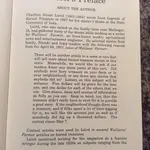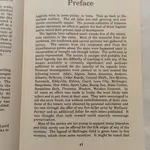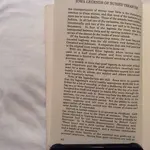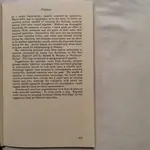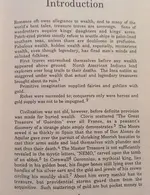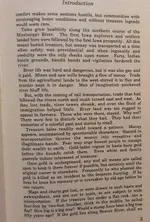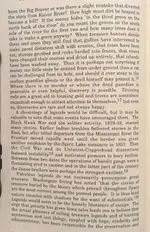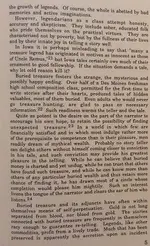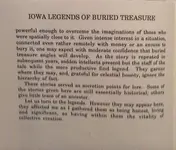Hi MDog,
I ran across this link in my bookmarks and thought you might want to see it. Certainly seems similar to the discussions. It's kind of long and has other treasure leads in it. I haven't had the best of luck posting links so I will put the content in as well. Also including the authors name.
I hope this is useful to you.
Patrick
-----------
Treasure in the San Luis Valley: The golden horde, part II
Here is the content of the article:
Treasure in the San Luis Valley: The golden horde, part II
November 21, 1997
By Christopher O’Brien
The French expedition of 1790
Journeying down from the northern Rockies, exploratory French forays into the rarefied air of the Sangre de Cristos are said to have produced gold. A little-known story researched by Crestone author Jack Harlan concerns an ill-fated French-Canadian expedition into the southern Colorado Rockies, and is centered around a very identifiable northern San Luis Valley landmark.
“While leaving the San Luis Valley by way of Poncha Pass, Round Mountain is skirted on the left. Here on Round Mountain an undetermined amount of gold nuggets [is] supposedly buried. There are several versions of the story. The most popular one is about a French Canadian trapper whose name has become lost through the years. . . .”
A party of Canadians were trapping on the Snake River when they were discovered by American trappers, who attacked. In their hasty retreat, the Frenchmen lost their furs and traps to the Americans. Traveling south into western Colorado, one of the four found a gold nugget in the headwaters of the Gunnison River. Here they spent the next month successfully panning the gravel bars. Ute Indians discovered the Frenchmen and attacked them. In the running battle which lasted several days, three Frenchmen were killed. The fourth managed to escape over Cochetopa Pass (just west of Saguache). Sensing that his pursuers were closing in, he buried the gold on Round Mountain with the hopes of later returning for it. The Indians caught and killed the lone French-Canadian near the summit of Poncha Pass.”
Starvation and bitter conditions killed off three of the men, who may have been eaten by the surviving two members.
The treasure was never found, but the story endures, hundreds of years later. I travel on U.S. 285, which winds within feet of this little mountain, and on every trip north out of the San Luis Valley, I wonder ,,,
One of Colorado’s most fabulous treasure legends is centered around a sizeable French expedition that journeyed to our area in the late 1700s. Setting out from a small French outpost near present-day Leavenworth, Kan., 300 men and 450 horses began the long trek toward the Rockies. The guides, officers, miners and laborers, following the course of the Platte River, explored and prospected several areas before reaching southern Colorado, and it is believed by some that the huge expedition may have superficially prospected unsuccessfully at Cripple Creek and other mining regions that later produced fabulous gold fields.
Working their way south, they finally ended up near present-day Summitville, Colo. They made camp several miles east of Wolf Creek Pass and began prospecting the many creeks that flowed down the San Juan Mountains, just west of the San Luis Valley, hoping to find the elusive malleable metal. They allegedly struck the motherlode and buried the gold on what is now called Treasure Mountain.
Most sources estimated the value at some $5 million, although one source estimated the cache as worth $33 million dollars. According to later reports, the gold was cached in three places, only known to the top officers of the expedition. A key chart was made of the entire area and kept by the officer in command.
At first, upon their arrival at the Summitville area, the Native Indians seemed friendly. However, for some reason not presently known, the Indians became angry with the French. Perhaps the knowledge that the French were leaving with gold from their lands prompted them to attack the expedition as the French set out. In any event, an attack was mounted, and during the pitched battle, the gold was reburied and the French made new maps detailing where the buried gold was hidden. Very few French survived the battle. Estimates range from 17 to 35, but it is known the some of them did survive the Indian onslaught. To make matters worse, they were attacked again out on the Front Range, and only five men survived to continue the journey back to the French outpost in Kansas. Starvation and bitter conditions killed off three of the men, who may have been eaten by the surviving two members. The two men, more dead than alive, stumbled into the outpost and one of them died.
The sole survivor, the expedition’s historian named “Le Blanc,” eventually traveled back to France with two copies of the treasure map. One was given to the French government, the other, naturally, he kept.
Several maps have appeared claiming to lead to the re-buried treasure.
There is much confusion at this part of the story. One version has the historian’s family mounting an expedition and returning to find the buried treasure. Another version has the French government mounting an expedition led by a relative of the historian. In any event, the second expedition, which numbered around 50 men, headed west to recover the gold. Stopping in Taos, N.M., they obtained the services of a guide who led them to the Summitville area. Allegedly, they searched the entire area for three years with no apparent luck. Then, the guide returned to Taos alone, claiming the entire expedition had again been wiped out by the Indians. The locals were suspicious of him because he was the sole survivor. He was tried for murder, but was acquitted. It is said that his trial was the last Mexican trial held in United States territory. Some theorists claim the whole story was contrived by the French who secretly found the gold and returned to France with it. The guide was paid to be a “patsy” and promised a fortune to return to Taos with the untrue story of a massacre. This scenario seems unlikely, although later, French equipment was found among the Indians.
Another version has the guide spending years trying in vain to locate the lost treasure of Treasure Mountain. Several maps have appeared claiming to lead to the re-buried treasure. A man named William Yule claimed he had a copy of the original and searched the entire western side of the valley – all the way north to Saguache, with no apparent success. Another colorful prospector named Asa Poor obtained the map from Yule, and with two partners, was able to locate several landmarks leading to the caches, but was not able to finally locate the hidden French gold. One of Poor’s partners, named Montroy, retained possession of the map, but it disappeared several years later.
Eureka?
After much digging, and a bit of luck, I’ve located and talked with several knowledgeable “treasure hunters.” I began hearing stories of “treasure maps.” Then, in 1993, I was introduced to a amiable man I’ll call Tomas Ortiz (not his real name). Tomas’ wife is the daughter of the patriarch of the treasure-hunting family. At one point in our initial conversation, he casually told me that his brother-in-law has an authentic “treasure map written in French,” and his family are “direct descendents of Le Blanc.” He told me, “for three generations” they have been quietly searching for the fabled lost French gold. Their claim is backed up with, what appears to be, a genuine map, drawn by the harried second expedition before they unsuccessfully tried to escape with their lives. Could this actually be the real Le Blanc map? Their map and story are impressive.
After searching for decades, family members have slowly and painstakingly located seven out of eight landmarks and clues carved in rock that are mentioned in the map. The most important eighth and final clue has eluded their efforts for years. Then, in 1993, their lucked turned. Or did it?
As Ortiz placed the last candle at the far end of the tunnel, a “large rattlesnake” lunged out of the gloom and narrowly missed striking him.
Thirty-year-old Tomas happened to be hunting elk, in the mountains southeast of Del Norte, Colo., on an overcast late fall morning in 1993. The clouds loomed threatening, and a cold hard rain began to spit. The pale pre-dawn gloom cast faint detail to the surrounding vegetation, and Ortiz looked around for shelter from the rain. He spotted a small 3-foot opening in the ground, hidden by some underbrush, and after removing some loose rocks, he squeezed through the opening and peered into the darkness. He clicked on his flashlight and was surprised to find he had entered a 5-foot-high, 4-foot-wide tunnel, obviously man-made. Ortiz cautiously explored down the gentle-sloping narrow passageway, and after wriggling about 20 feet into the hillside, his way was blocked by an apparent underground landslide. Shining his light around the dim narrow passageway, he spied a carving on the rock wall next to the cave-in. Quite aware of his in-law’s long quest, he was thrilled by what he saw. It was the long-lost eighth clue that according to the treasure map indicated the hidden location of the fabled French treasure. Completely forgetting the wily elk herd he had been stalking, he excitedly rushed back to town to tell the family of his fortuitous find.
The following day, Tomas led an expedition back to the tunnel. Members of the party, consisting of 20 family members, began eagerly excavating the cave-in, and after several grueling hours of hard work, they extended the tunnel an additional 12 feet into the mountainside. Thirty-two feet in, they encountered a large boulder that appeared to have been purposely rolled into place to seal the rest of the passageway. By this time, the sun had set and the elated group gathered at the entrance and took a break as twilight approached from the east. Undaunted by the approaching night, Tomas lined the length of the passageway with a dozen equally spaced unlit candles. The ensuing events allegedly occurred “in a matter of minutes.”
As Ortiz placed the last candle at the far end of the tunnel, a “large rattlesnake” lunged out of the gloom and narrowly missed striking him. He frantically scrambled breathlessly back out to the entrance followed by a boiling “swarm of bats” that began pouring out of the hillside. Uncharacteristically, the small mammals began squeaking and diving aggressively at the surprised party. What they claim happened seconds later quickly erased the elation and excitement of the expedition. According to Tomas, as he knelt down to light the first candle at the entrance to the tunnel, the “candle at the far end” of the passageway inexplicably flared on by itself! The stunned group knowing no one was in the tunnel stared at each other in horror. “At that instant,” out of the gloom, a “huge owl” dive-bombed the shocked party within inches of their heads. That was the last straw. As if chased by the devil himself, the terrified group grabbed their children, raced down the hillside, piled into their cars and, as Tomas put it, they “got the hell outta there!”
Further research has uncovered information that suggests the Ute Indians may have acquired some of the French gold during the running battle, and hid it down near the mouth of the Rio Grande Canyon. As of this writing, the family has obtained the Colorado state treasure rights to legally enter the cave and claim whatever treasure is located there. I have been invited along to document the event.
Dead Man’s Cave
Another fascinating account is one of the few that have actually produced verified gold to bolster the lucky finder’s claims. However, this is one of those that got away. It’s probably still out there. The Fairplay Flume, in 1880, and The Denver Post have both published articles about this story told by three prospectors – E.J. Oliver, S.J. Harkman and H.A. Melton. In 1880, the three men had been prospecting 2 miles north of what become known as Dead Man Camp, (about 8 miles south of where I live) The sky threatened, and before long the three men found themselves caught in a furious blizzard. Knowing travel is difficult, at best, in the rugged Sangres under ideal weather conditions, they found shelter underneath a convenient ledge near the mouth of a canyon.
Looking across the canyon, one of the men noticed what appeared to be a small opening in the shear rock wall. They made their way to the opening and made several crude torches. The opening was very narrow and less than 4-feet high and extended into the cliff about 10 feet, before it opened up into a large 20-foot-long vault. Shining their torches around, Oliver found the first of five skeletons scattered around the dusty, dark cavern. After exploring the cavern, they found several tight passageways extending into the gloom of the mountain. They chose one to explore. It led into the mountain and opened up into a larger vault-like chamber. Near the far end, Melton noticed what appeared to be shelves carved into the side of the western wall. He lit the area and saw some peculiar-looking stones stacked on the shelf. He picked one up; surprised at its heavy weight, and brought it back to his partners to look at. Imagine their delight when the “stones” turned out to be crude bars of gold! In their excitement, thinking the opening would be easy to mark and find again, the men gathered up only five of the bars, and headed over the pass to Silver Cliff, in the Wet Mountain Valley. The bars proved to be worth $900 apiece, and the men became instant celebrities. Although asked by many, the men steadfastly refused to divulge the actual location and secretly made plans to return to Dead Man’s Cave.
Search these vast areas hard and deep enough and you may be surprised at what you’ll find, but I suggest you tread lightly . . .
“The men slipped off in the spring. But they never found the Dead Man Cave. Thought had thought it would be easy, but on their return they found so many places that looked like the area in which the caves were found. In fact, practically the entire area seemed strange to them. They went back frequently. Many others went back frequently. Nobody found anything.” (The Fairplay Flume)
Colorado has an interesting series of “treasure rights,” which can be obtained for the right to look, find and keep treasure found in specific deeded locations. I couldn’t help but wonder, who owned the treasure rights for the area around the Dead Man’s Treasure?
A simple listing of the San Luis Valley and Huerfano area’s lost mines and treasures is, to say the least, impressive. The following is a sampling of south-central Colorado and north-central New Mexico legends and accounts from the seminal works, “Lost Mines and Buried Treasures of the West,” by Thomas Probert (the University of California Press, 1977); “Treasure of the Sangre De Cristos,” by Arthur Campa, (The University of Oklahoma Press, 1963); the voluminous “Directory of Buried or Sunken Treasures and Lost Mines of the United States” (True Treasure Publications, 1971); the compelling “Treasure Tales of the Rockies,” by Thomas Penfield (Sage Books, 1961); the northern San Luis Valley’s “Post Marks and Places,” by Jack Harlan (Golden Bell Press); “Colorado’s Lost Mines and Buried Treasure,” by Caroline Bancroft (Bancroft Booklets, 1961), and various other sources.
From the Huerfano/Spanish Peaks region:
Alex Cobsky’s Lost Mine near Silver Mountain, northeast of La Veta Pass
The Arapaho Princess Treasure, near the Spanish Peaks
Caverna del Oro, on Marble Mountain
George Skinner’s Lost Mine, on Horn Peak Mountain
The Green Lost Mine, west of the town of Red Wing, Colo.
The Lost Mine of the Greenhorn Mountains, just east of the Wet Mountain Valley
Henry Sefton’s Treasure, on the east side of the Sangres
The fabled Huajatolla Gold, on the Spanish Peaks
Jack Simpson’s Lost Mine, on Silver Mountain, east of La Veta, Colo.
The Jasper Lost Mine, near Red Wing
Juan Carlos’ Lost Gold, on the Blanca Massif
The Lost Pick Mine of Veta Creek, north of La Veta Creek in the Huerfano
The Lost Veta Mine, north of La Veta Creek in the Huerfano
The Treasure of the Spanish Fort, 25 miles west of Walsenburg
From the southern, New Mexican part of the San Luis Valley, we could find:
Cannady’s Murder Money, in Taos Canyon
The Chavez Lost Copper Mine, north of El Rito, N.M.
The Grinning Skull Treasure, in the Sanges east of Taos
Gus Lawson’s Lost Mine, on Taos Mountain
Juan Gallule’s and Techato Martinez’ Lost Mine, on Jicarita Peak
Madame Barcelo’s Lost Treasure, 40 miles east of Taos
Padre Mora’s Treasure, Kit Carson State Park, southeast of Taos
Rio Grande Gold, on the Rio Grande, north of Taos;
Simeon Turley’s Lost Mine and Treasure, about twelve-miles northwest of Taos;
The Treasure of Tres Piedras, west of Tres Piedras, N.M.
White’s Lost Mine, near the town of Amalia, N.M.
From the central and northern San Luis Valley, where I live, we might even find the following:
The Spanish Treasure of Blanca Peak, on Blanca Peak, north of Ft. Garland, Colo.
The Lost Mine of Embargo Creek, east of Creede, Colo.
The Paymaster’s Treasure of Ft. Garland, on Trincera Creek, south of Ft. Garland
The Lost Mine of Hidden Valley, near La Jara Creek, west of Capulin
The Josh Thomas Treasure, on Conejos Creek, west of Antonito, Colo.
Manuel Torres Lost Mine, on Culebra Peak, southeast of San Luis, Colo.
Mark Bidell’s Lost Lode, near Saguache Creek, northwest of Del Norte, Colo.
The Phantom Mine, Davis Gulch, 6 miles south of Crestone
The Lost Brother Mine, north of San Isabelle Creek
The Lost Sidney Brother Mine, Burnt Gulch, just east of Crestone
The Disappearing Sand Dunes Wagon, Great Sands Dunes National Monument
The Lost Mine of Mogate Peak, east of Creede, Colorado
The Buried Treasure of Round Hill, just south of Poncha Pass
The Lost Mine in the Sangres, near Cottonwood Creek, 5 miles south of Crestone
The Missouri Bank Robbery Treasure, between Music and Mosca Pass
The Center (Colorado) Bank Heist Loot, north of Moffat, Colo. at the Grey Ranch
The Lost Treasure of Treasure Mountain, east of Pagosa Springs and from near the Taylor Ranch
White’s Lost Cement Mine, on Culebra Peak in Costilla County
There may be additional secrets buried beneath south-central Colorado. Hidden away from prying eyes and the light of discovery, it is said, the mountain’s inner depths contain man-made mysteries perhaps more compelling than gold and treasure. Search these vast areas hard and deep enough and you may be surprised at what you’ll find, but I suggest you tread lightly . . .
Filed Under: Colorado's San Luis Valley



